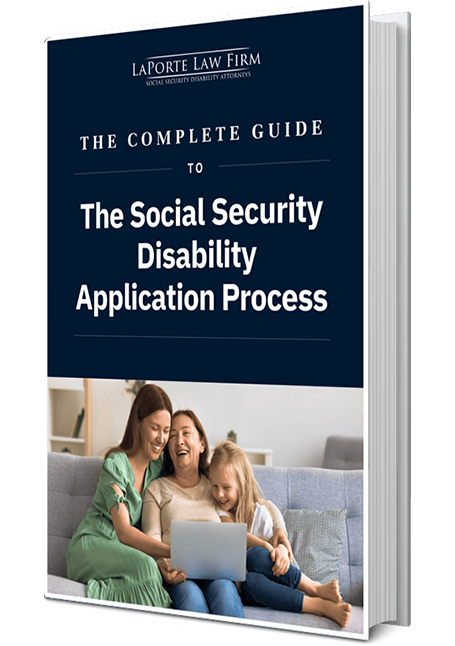
In California, expectant mothers and fathers can take advantage of a range of benefits, from job protection to partial wage replacement, ensuring peace of mind during this special time. Whether you’re embarking on this journey for the first time or adding to your family, understanding your rights and options is key to navigating maternity leave with confidence.
California’s Maternity Leave Policy
California’s maternity leave policy is governed by several federal and state laws that provide paid leave and employment protection. The California State Disability Insurance (SDI) and California Paid Family Leave (PFL) policies provide monetary benefits to expecting and new mothers and parents when bonding with their new child. Note that SDI and PFL do not provide job protection, only monetary benefits. Both are administered by the California Employment Development Department (EDD). Meanwhile, the Family Medical Leave Act (FMLA), California Family Rights Act (CFRA), and Pregnancy Disability Leave (PDL) offer unpaid, job-protected leave before and after the birth of your new child. If you are eligible, these policies guarantee reinstatement to the same or equivalent position when you return to work after the birth of your child. In this article, we explain the eligibility for these benefits and the benefits you may receive before you give birth, after you give birth, and while you bond with your new baby.Paid Leave Options in California
As discussed, California offers two programs that provide partial wage replacement during maternity leave: SDI and PFL.State Disability Insurance
The California State Disability Insurance program provides partial wage replacement for eligible workers who have lost wages when they are unable to work due to a non-work-related illness, injury, or pregnancy. This program provides wage replacement (60–70%). The disability insurance claim begins when you have a loss of wages and your physician/practitioner confirms that you are unable to do your normal job duties. To learn more about the State Disability Insurance program, you can check out our blog article on what you need to know about California short-term disability insurance benefits. Disability insurance is available for pregnant women before the birth of their child and for the recovery period after childbirth. You can receive SDI benefits for up to four weeks prior to your expected due date. You will continue to receive benefits for six weeks after a vaginal delivery or eight weeks if you gave birth via cesarean. If you have a pregnancy-related condition that prevents you from working beyond this period of time, you may be eligible for benefits for longer.Paid Family Leave
California’s Paid Family Leave provides benefits to eligible people who take time off work to care for a seriously ill family member or bond with a new child. The California Paid Family Leave for Bonding benefit allows new parents the ability to receive benefits to bond with a new child who entered their family by birth, adoption, or foster placement. For new mothers, you may transition from your State Disability Insurance-related pregnancy claim to a Paid Family Leave-related bonding claim. PFL offers partial wage replacement (60–70%) for up to eight weeks of leave within the first year of the child’s arrival.Eligibility for SDI and PFL Paid Family Leave in California
Before you apply for State Disability Insurance or Paid Family Leave, make sure you are eligible for the benefits. Expecting parents must meet the following criteria to be eligible for SDI and PFL benefits: H3] Employment status To receive SDI or PFL benefits, you must be employed or actively looking for work at the time your leave starts and you paid into the SDI system 5–18 months before your claim start date. Eligibility is not based on your length of employment or the number of employees your company has on staff.Insured status
You must have paid SDI taxes in the past 5–18 months before your leave. These taxes are automatically deducted from your paycheck. Usually, this is denoted as “CASDI” on most paystubs. If you are self-employed, you may be eligible for benefits if you contributed to the Disability Insurance Elective Coverage program, which is denoted as “DIEC” on paystubs.Citizenship and immigration status
Your citizenship and immigration status do not affect your eligibility for SDI or PFL benefits.How to Apply for Paid Leave in California
Each program, SDI and PFL, requires an individual claim to be filed either online or through the mail. Filing a claim electronically is strongly recommended because it expedites the review process. To do so, you must first create a myEDD account here.Timing the application
To be eligible for State Disability Insurance or Paid Family Leave, you must apply for benefits at the right time. For expecting mothers, you should submit your State Disability Insurance claim no earlier than nine days after your leave begins but no later than 49 days after your disability. If your pregnancy-related condition requires you to stop working earlier than four weeks before your estimated due date, you can file a claim sooner. For new parents, you may submit a claim for Paid Family Leave no earlier than the first day your leave begins, but no later than 31 days after your leave begins. If you are a birthing mother who was already on State Disability Insurance, you must file a new claim for Paid Family Leave. The application for Paid Family Leave can begin once your SDI claim is exhausted.Gathering the required information
To apply for benefits, you’ll have to have the following information ready:- Valid California driver’s license (CDL) or identification (ID) card number
- Your full legal name
- Date of birth
- Social Security number
- Most current employer’s business name, phone number, and mailing address (as stated on your W-2 or paystub)
- Last date you worked your normal or usual duties (or the date you began working less than full or modified duty)
Filing your claim online
If you have decided to file your claim online, you can log in to your myEDD account, select SDI Online, and then select New Claim.- If you are applying for disability insurance for a pregnancy-related claim, select Disability Insurance.
- If you are applying for Paid Family Leave, select Paid Family Leave Bonding and follow the steps in each section to fill out the form.
- If you are a new mother transitioning from a disability-related pregnancy claim, you will find the form you need to complete, Claim for Paid Family Leave (PFL) Benefits – New Mother (DE 2501FP), in your inbox once your SDI claim ends.
Submit the required documentation
If you are an expecting or new mother submitting a disability insurance claim, your health professional must submit a completed and signed certificate that confirms your expected due date. It is your responsibility to have your licensed health professional submit the completed and signed certification form no later than 49 days after your disability begins or you may lose benefits. For mothers without a prior SDI claim, new fathers, and foster or adoptive parents filing a PFL claim, you will need to provide a Proof of Relationship document with your claim. A Proof of Relationship document can be a birth certificate or formal adoption papers. If you are a new mother and your disability insurance claim has ended, you must submit a new Paid Family Leave Claim. In your PFL application, you do not need to submit any additional documentation.Understanding Your Rights to Job Protection
In California, parents enjoy strong job protection rights during maternity leave, providing a supportive foundation as they welcome a new member of their family while maintaining confidence in their job stability.Family and Medical Leave Act
The FMLA requires covered employers to provide employees with leave for certain family and medical reasons. During this time, the eligible employee continues their group health benefits under the same conditions as if they had not taken leave. Employees must be restored to the same or virtually identical position at the end of the leave period. The FMLA provides job protection for up to 12 weeks for pregnancy-related disability or leave to bond with a new child. Covered employers under the FMLA include employers who employ 50 or more employees in 20 or more work weeks a year. Eligible employees must have worked for their employer for at least 12 months, have at least 1,250 hours of service during those 12 months, and work at a location where the employer has at least 50 employees. If you think you need an FMLA attorney, check out our blog article here.California Family Rights Act
The California Family Rights Act provides eligible employees with up to 12 weeks of job-protection leave during a 12-month period. Take note that CFRA does not provide paid leave or wage replacement; rather, it is intended to provide job protection to keep the same employer-paid health benefits they had while working. Eligible employees can use CFRA after the birth of a child or adoption or foster care placement of a child. Keep in mind that pregnancy itself is not covered under this act. The California Family Rights Act is intended to protect employees who take a 12-week baby bonding leave. Employers need to have only five or more employees for them to be subject to this act, and there is no eligibility period for employees.Pregnancy Disability Leave
PDL provides 12 weeks of job-protected leave because of pregnancy or childbirth. Leave can be taken before and after birth during any time you are unable to work because of pregnancy or a pregnancy-related condition. During this time, your employer must pay for the continuation of your group health benefits if your employer normally pays for those benefits. While you are working and pregnant, this law also requires that employers provide you with reasonable accommodations during your pregnancy and transfer you to a less hazardous or strenuous job. This law applies to all employers with five or more employees.Can I file for Social Security Disability Insurance While on State Disability Insurance or Paid Family Leave?
Social Security Disability Insurance (SSDI) is a long-term disability benefit administered by the Social Security Administration. To be considered disabled under their rules, you must demonstrate an inability to perform substantial work due to a serious impairment that has lasted or can be expected to last for at least 12 months, or can be expected to result in death. To receive benefits under the Paid Family Leave program, you do not need to be disabled. If you do not have a disability that precludes your ability to work, you may not be eligible for SSDI. If you receive benefits under the State Disability Insurance program and you expect your disability to extend beyond 12 months, you may consider filing an application for SSDI. Most pregnancy-related conditions or post-birth complications are temporary. If you have a complication that precludes your ability to perform work and your physician/practitioner confirms that you are unable to do your normal job duties, you may continue to relieve State Disability Insurance. SDI can last for up to 12 months. If your condition lasts for less than 12 months, you will not be eligible for SSDI benefits. In some cases, post-birth complications can extend for longer. For example, in some limited cases, postpartum depression may be a qualifying disability for SSDI. If you have a physical or mental disability that precludes your ability to work, you should consult an experienced attorney to assess your eligibility for Social Security disability benefits.FAQs
In California, you can get four weeks of paid leave prior to your expected due date, and six or eight weeks after the birth of your child. Once your pregnancy-related disability benefits end, you can get an additional eight weeks of paid leave.
Once your disability insurance benefits end, birthing mothers can apply for paid family leave. This allows the mother to continue to bond with their child after their pregnancy-related disability benefits end.
Your weekly benefit amount is 60–70% of your past wages that you earned 5–18 months before your claim start date, up to the maximum weekly benefit amount. In 2024, the maximum weekly benefits amount is $1,620.
To qualify for State Disability Insurance or Paid Family Leave, you must have lost wages due to a pregnancy-related disability or to care for your child. You can continue to work part-time while receiving benefits. On the application form, there is a section asking if you plan to work part time while you receive benefits. Make sure to explain that you will work part time and attach a detailed note to your claim form explaining which days you will work and the number of hours to be worked each day.















